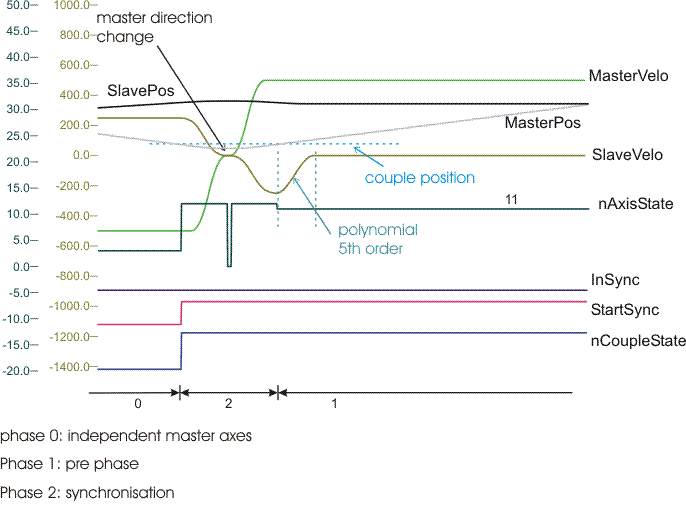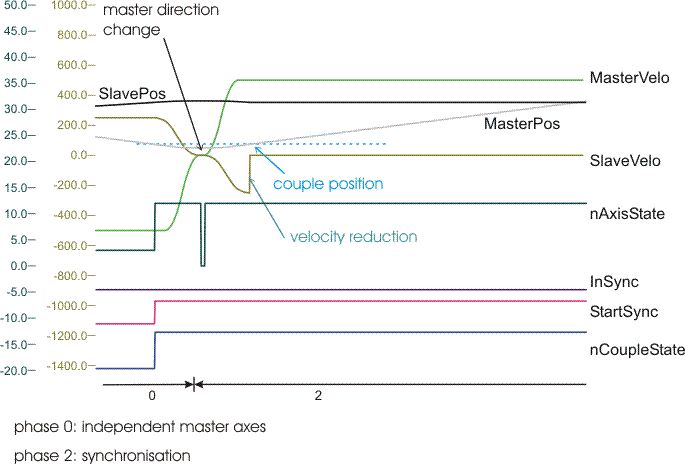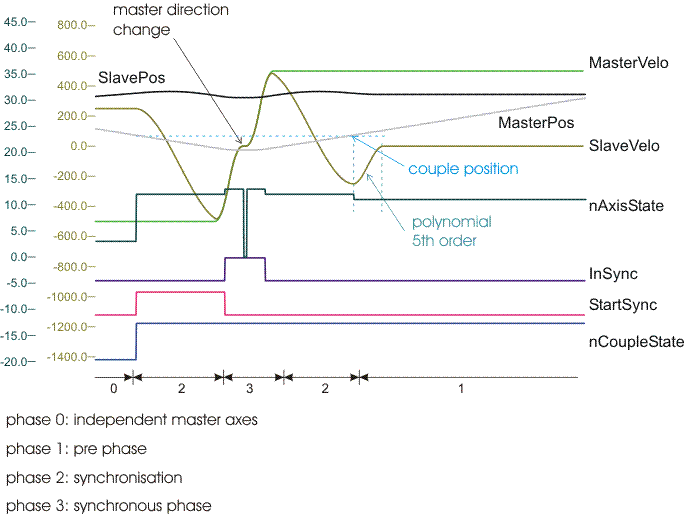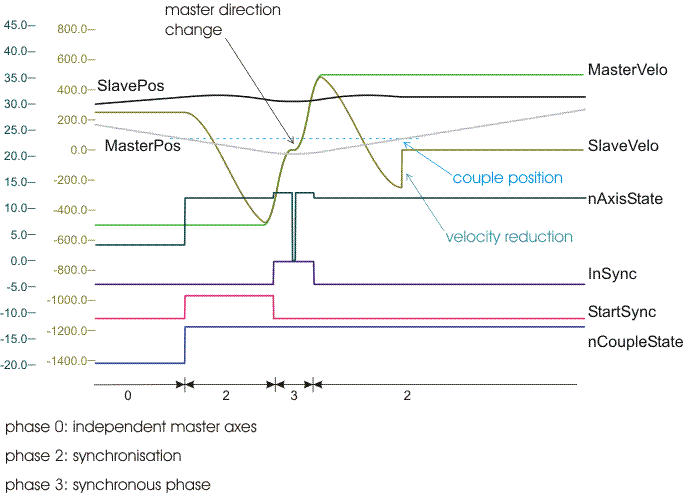Reversal of the master axis movement / backstop
The behavior of the Universal Flying Saw in the event of a motion reversal of the master can be defined via 2 bits of the SyncMode. The GEARINSYNC_OPMASK_ROLLBACKLOCK bit activates the backstop, which immobilizes the slave if the master moves backwards beyond the coupling position (the position where the Universal Flying Saw was started) after a motion reversal. The second bit, GEARINSYNC_OPMASK_INSTANTSTOPONROLLBACK, governs dynamic aspects of how the slave comes to a halt.
Notice | |
The effect of these two bits must be differentiated according to whether the synchronous phase is reached before the motion reversal, or whether the motion reversal already occurs in the synchronization phase. |
The following overview explains the effect of the GEARINSYNC_OPMASK_ROLLBACKLOCK and GEARINSYNC_OPMASK_INSTANTSTOPONROLLBACK bits in detail.
ROLL | INSTANT | Synchronous phase | Description |
|---|---|---|---|
0 | 0 | yes | Case 1: With the bit combination specified on the left, synchronous coupling is maintained for all master movements once the Universal Flying Saw is in the synchronous phase. In the figure below, a motion reversal of the master axis occurs in the synchronous phase, so that it moves backwards beyond the coupling position. The synchronous coupling is maintained here, so that the slave also moves backwards beyond the coupling position.
|
0 | 0 | no | Case 2: Before reaching the synchronous phase, the motion of the master axis is reversed in the synchronization phase so that it moves backwards beyond the coupling position. Since the synchronous phase has not been reached in this case, the velocity of the slave axis is reduced with a 5th order polynomial when the coupling position is reached and the axis is brought to a standstill.
|
0 | 1 | no | Case 3: As in case 2, except that the velocity of the slave axis is reduced to zero within one tick after reaching the coupling position. The velocity reduction in one tick can trigger the following error monitoring of the axis.
|
0 | 1 | yes | Case 4: Behavior is identical to case 1. |
1 | 0 | no | Case 5: Behavior is identical to case 2. |
1 | 0 | yes | Case 6: The bit combination indicated on the left is used to activate the backstop of the Universal Flying Saw. In the figure below, a motion reversal of the master axis occurs in the synchronous phase, so that it moves backwards beyond the coupling position. With this backward movement of the master axis, the velocity of the slave axis is reduced to zero with a 5th order polynomial as soon as the coupling position is reached. Reverse movement of the slave axis is therefore prevented in that the slave velocity is continuously reduced as soon as the coupling position is reached.
|
1 | 1 | no | Case 7: Behavior is identical to case 3. |
1 | 1 | yes | Case 8: The bit combination indicated on the left is used to activate the backstop of the Universal Flying Saw. In the figure below, a motion reversal of the master axis occurs in the synchronous phase, so that it moves backwards beyond the coupling position. During this backward movement of the master axis, the velocity of the slave axis is reduced to zero in one tick as soon as the coupling position is reached. Reverse movement of the slave axis is therefore prevented in that the slave velocity is reduced as soon as the coupling position is reached. The velocity reduction in one tick can trigger the following error monitoring of the axis.
|




